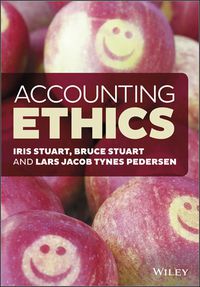Question
Accounts Receivable Vaughn Co. makes most of its sales on a credit basis. Applying GAAP, Vaughn uses the allowance method to account for credit losses.
Accounts Receivable
Vaughn Co. makes most of its sales on a credit basis. Applying GAAP, Vaughn uses the allowance method to account for credit losses. The company adjusts its accounts just once a year, at the December 31 year-end. Consider the following balances pulled from Vaughns unadjusted trial balance at year-end 2020:
| Account | Debit | Credit |
| Accounts receivable | 5,187,490 |
|
| Allowance for doubtful accounts | 32,810 |
|
Vaughn prepared an aging of accounts at year-end 2020, as follows:
| Age Group | Amount | Estimated % Uncollectible |
| 0-30 days | $2,153,680 | 1.1% |
| 31-60 days | 1,392,510 | 4.6% |
| 61-90 days | 874,130 | 11.9% |
| 91-120 days | 461,290 | 18.4% |
| Over 120 days | 305,880 | 43.7% |
|
| $5,187,490 |
|
On March 19, 2021, Vaughn determined that it must write off a large receivable balance, amounting to $26,439.
Notes Receivable
On December 31, 2020, Vaughn received a 4-year, 3%, $27,935 promissory note as consideration in an inventory sale transaction on that date. The note requires the customer to pay interest annually on December 31 (2021 through 2024). The going market rate of interest for comparable notes on the issue date was 5%. Applying GAAP, Vaughn uses the effective-interest method to amortize premiums and discounts on all of its promissory notes.
Receivables Data Analytics
Below, you are provided information on the receivables and related allowance for credit losses for three members of the S&P 100. The information is provided for the years 2019, 2018 and 2017. All amounts are stated in millions of dollars.
| Capital One Financial Corporation | |||
|
| 2017 | 2018 | 2019 |
| Gross receivables, 12/31 | 254,473 | 238,679 | 265,809 |
| Allowance for credit losses, 1/1 | 6,503 | 7,502 | 7,220 |
| Write-offs | 6,562 | 6,112 | 6,252 |
| Bad debt expense | 7,563 | 5,858 | 6,223 |
| Other adjustments | 2 | 28 | 17 |
| Allowance for credit losses, 12/31 | 7,502 | 7,220 | 7,208 |
| Citigroup Inc. | |||
|
| 2017 | 2018 | 2019 |
| Gross receivables, 12/31 | 667,034 | 684,196 | 699,483 |
| Allowance for credit losses, 1/1 | 12,060 | 12,355 | 12,315 |
| Write-offs | 7,076 | 7,113 | 7,768 |
| Bad debt expense | 7,503 | 7,354 | 8,218 |
| Other adjustments | 132 | 281 | 18 |
| Allowance for credit losses, 12/31 | 12,355 | 12,315 | 12,783 |
| Wells Fargo & Company | |||
|
| 2017 | 2018 | 2019 |
| Gross receivables, 12/31 | 956,770 | 953,110 | 962,265 |
| Allowance for credit losses, 1/1 | 12,540 | 11,960 | 10,707 |
| Write-offs | 2,928 | 2,744 | 2,762 |
| Bad debt expense | 2,528 | 1,744 | 2,687 |
| Other adjustments | 180 | 253 | 176 |
| Allowance for credit losses, 12/31 | 11,960 | 10,707 | 10,456 |
Instructions
Using the information provided above, address each of the following matters related to receivables:
(a) Accounts receivable: <3.0>
(1) Give the adjusting entry Vaughn must make for bad debts at December 31, 2020.
(2) Give the entry Vaughn must make to record the write-off of the customer balance on March 19, 2021.
(b) Notes receivable: <7.0>
(1) Give the entry Vaughn must make to record the receipt of the 4-year promissory note on December 31, 2020.
(2) Give the interest and collection entries Vaughn must make over the remaining term of the 4-year note (through December 31, 2024). Tip You might find it helpful to start by preparing an amortization schedule (see pages 7-19 and 7-20).
(c) Receivables data analytics: <5.0>
(1) Compute the 12/31 allowance as a percentage of the 12/31 receivables for each company and year. Prepare a clustered column chart to show the yearly percentage for each company. Which company shows a decreasing percentage for both 2018 and 2019?
(2) Compute the 1/1 allowance as a percentage of the write-offs for each company and year. Prepare a clustered column chart to show the yearly percentage for each company. Which company shows a higher percentage for 2019 than for 2017?
(3) Compute the cumulative expense for 2017 to 2019 as a percentage of the cumulative write-offs for 2017 to 2019. Prepare a clustered column chart to show the percentage for each company. Which company appears to have forecast write-offs the most accurately over this three-year period? Explain in one sentence.
Step by Step Solution
There are 3 Steps involved in it
Step: 1

Get Instant Access to Expert-Tailored Solutions
See step-by-step solutions with expert insights and AI powered tools for academic success
Step: 2

Step: 3

Ace Your Homework with AI
Get the answers you need in no time with our AI-driven, step-by-step assistance
Get Started


